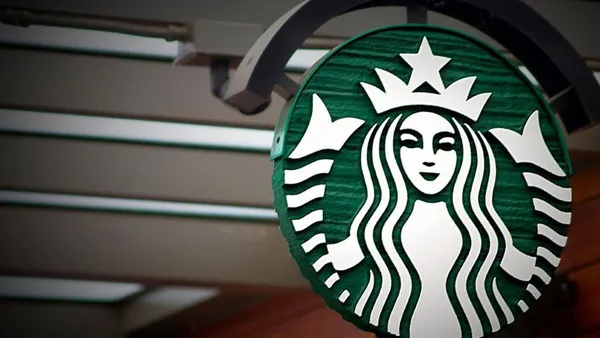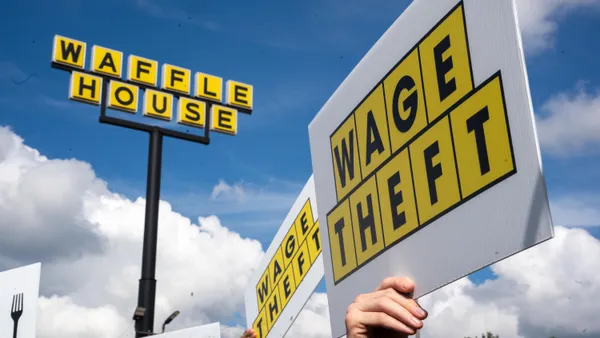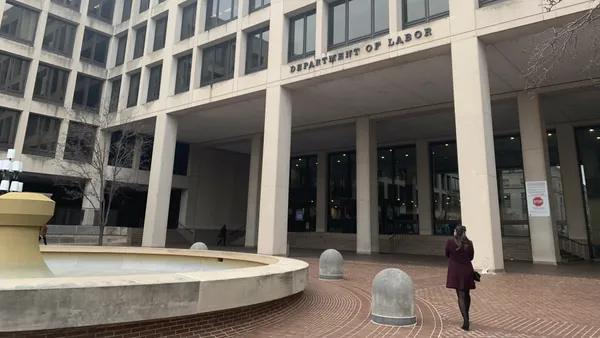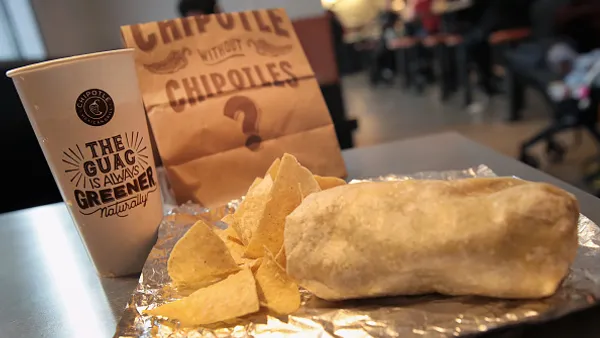Dive Brief:
- Labor shortages and the highest inflation in three decades have prompted companies to budget 3.9% wage increases for 2022 — the biggest jump since 2008, according to a survey by the Conference Board.
- Almost half (46%) of survey respondents said an increase in wages for new hires pushed up their salary budget estimates for 2022, the Conference Board said, while 39% pointed to inflation, now rising at the fastest rate in three decades. Projections for 2022 salary increases surged to 3.9% from 3% in an April survey.
- Wage growth will probably exceed 4% in 2022 amid severe and persistent labor shortages, Gad Levanon, head of the Conference Board’s Labor Market Institute, said in a blog post. "Wages for new hires and workers in blue-collar and manual services jobs will grow faster than average."
Dive Insight:
CFOs setting company prices and wages for 2022 confront the prospect that a flare-up of inflation during much of 2021 may spark wage increases that, in turn, lead to bigger price gains.
"A wage-price spiral — where higher prices and rising wages feed each other, leading to faster increases in both — may already be in the works," Levanon said. "After being a non-issue in wage determination for several decades, sizable cost of living adjustments may be making a comeback."
The consumer price index (CPI) in October rose at a 6.2% annual rate — the biggest surge in 30 years, according to the Labor Department.
"There are no signs of inflation slowing down, and it may remain elevated in the coming months," Levanon said.
Federal Reserve Chair Jerome Powell predicted in testimony to the Senate Banking Committee on Nov. 30 that high inflation will persist through mid-2022. Powell said central bank policymakers at their next meeting on Dec. 14-15 may reduce economic stimulus by speeding up the planned tapering of Fed bond purchases.
Rising wages and robust economic growth will fuel inflation above the Fed’s 2% long-run target during the next three years, with the CPI rising 4% on an annual average basis in 2022 compared with 4.5% this year, according to a survey of 48 professional forecasters by the National Association for Business Economics. Consumer price inflation has been particularly acute in restaurants, where October and November both saw the highest menu price inflation in decades.
A rapid recovery from a pandemic-induced recession has created bottlenecks in the supply of many goods and pushed up prices. Meanwhile, the slow return of workers from coronavirus lockdowns has led to labor shortages, competition for employees and an increase in wages.
"Helped wanted" signs go unanswered. The quits rate, or the number of workers who left their jobs as a percent of total employment, fell to 2.8% in October after reaching 3% in September, the highest rate in data going back to 2000, the Labor Department said last month. There were 1.4 job openings for every unemployed worker.
The quits rate was particularly high in the food service industry, with hospitality, accommodations and food services seeing a 6.6% quits rate in August, according to BLS data.
Private sector hourly wages increased 4.8% in November compared with 12 months before, the Labor Department said on Dec. 3.
The proportion of small businesses that raised pay in October hit a 48-year high, with a net 44% increasing compensation and a net 32% planning to do so in the next three months, the National Federation of Independent Business said last month.
New hires — including workers under 25 and those who switched jobs during the past year — have enjoyed especially rapid wage growth, Levanon said. Experienced workers may feel undervalued and find higher pay at another employer.
"Employers faced with extensive departures of experienced workers will raise wages faster for current employees in order to maintain an effective workforce," he said.
The Conference Board surveyed compensation executives at 240 companies Nov. 8-19. More than half of the companies employ more than 10,000 employees.














